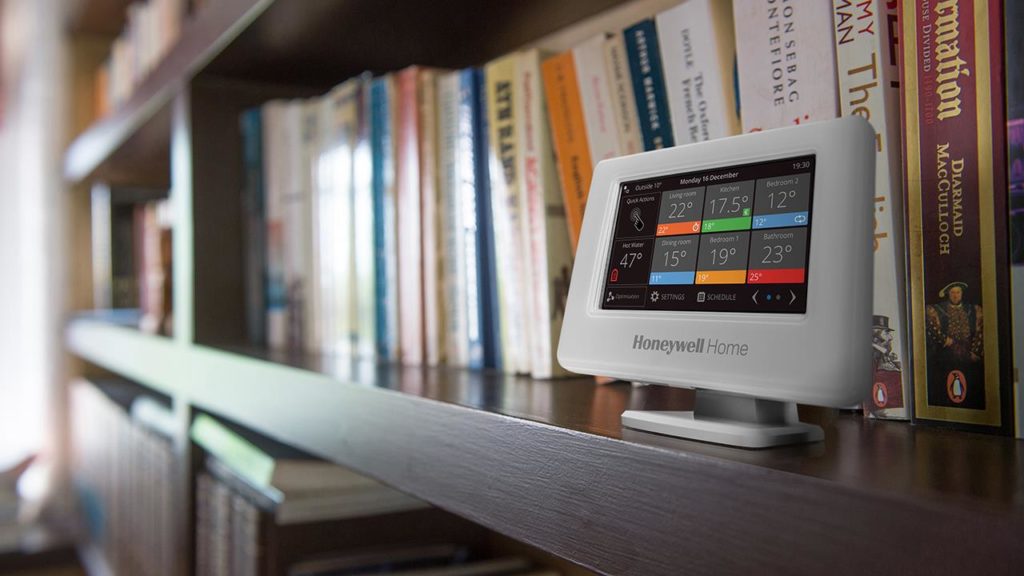[ad_1]
Alastair McLean, of McLean Electricals, talks through common issues with smart thermostatic controls, and takes a look at features found in the next generation of heating controls.
A home equipped with the latest heating technologies that still struggles to keep its occupants warm and deliver the expected levels of energy savings may simply be down to an inability to make the most of thermostatic controls.
Complex controls
Some of the heating controls on the market aren’t that user-friendly. When I ask my customers how they get on with using their existing controls, they often tell me that they muddle their way through it to make their heating work.
The importance of having a simple to use control shouldn’t be underestimated. This is even more the case for those who have, or are about to have, heat pumps installed. Heat pumps work in a very different way to boilers and need to be controlled so that they don’t cycle on and off excessively.
Instead of setting the timings and temperatures so that the heat source turns on and off as required – as you would with a boiler – the homeowner needs to set ‘comfort’ and ‘set-back’ temperatures. Running times also need to be much longer compared to those of a boiler. This way of controlling heating takes getting used to, so the more user-friendly the controls are, the easier it will be for homeowners to manage their system correctly.
Some controls on the market let users access lots of information and data about their systems but, at the end of the day, most customers want to be able to adjust basic functions quickly without navigating around complex menus.
Recommending a control with a simple and intuitive interface, such as the Honeywell Home evohome smart zoning thermostat, for example, means the customer will be more likely to reap the benefits of using smart technology.
Multiple gadgets
Having closer control of each aspect of the heating system can increase comfort, energy savings, and carbon reduction for homeowners. This is why customers often have multiple controls for different aspects of their heating.
While this allows them to have, say, one setting for the underfloor heating, and another for the radiators, it is safe to bet that the controls don’t communicate with each other and with the heat source as well as the customer would like them to.
Again, simplicity is key, and your customers will be grateful to be able to adjust the settings for the heat pump, boiler, or electric heaters, as well as hot water and underfloor heating from the same unit, if you can provide that for them.
Single zone properties
Customers who have large homes don’t want to waste energy and money heating rooms they don’t use. But at the same time, they don’t want the house to feel cold. Zoning is, of course, the perfect solution to this.
However, if the existing heating system is not designed to accommodate the option, the pipework will need to be adjusted; something the customer may be unwilling to undertake for reasons of costs or, simply, disruption.
This is where smart systems come into their own. They can create and manage a number of different zones through wirelessly connected controllers and thermostats installed on heat emitters, heat sources, and hot water cylinders, removing the need to install new pipework.
Unusual property characteristics
Not only is zoning beneficial for properties that are not fully occupied all the time – it can also address issues arising from unusual building designs. Heat loss varies from area to area, and combining zoning with other advanced capabilities can make it easier for customers to automate their heating.
Smart weather control features allow the system to learn what the heat loss pattern is in each zone, and increase the set temperature when it detects colder weather outside.
When it gets warmer outside, it’ll automatically go back to the normal programme. This sort of feature can remove variances in comfort arising from the way a house is orientated or built, and make customers’ homes a bit more convenient.
A smart thermostatic control is a key part of any modern heating system, yet its ability to improve comfort and deliver energy savings can be overlooked.
A flexible heating control that enables an installer to build a system to meet an individual customer’s needs can resolve a number of simple issues, enabling homeowners to optimise the performance of their heating appliances, reduce their carbon footprint, and save money on their energy bills.
[ad_2]
Source link
